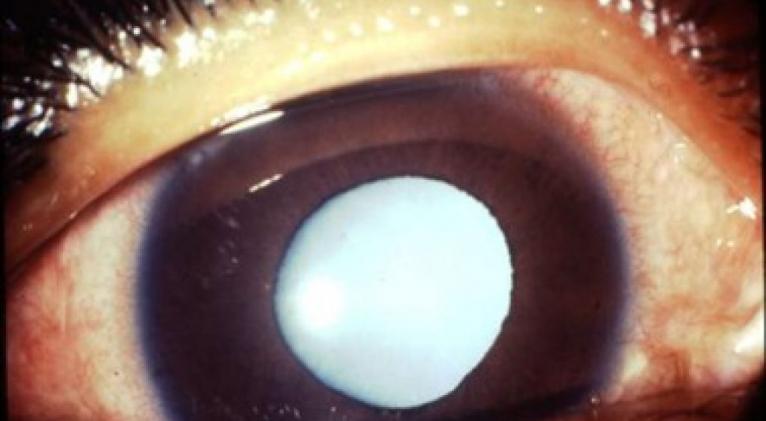Eye drops could dissolve cataracts
especiales

But now, a team of scientists and ophthalmologists has tested a solution in dogs that may be able to dissolve the cataract right out of the eye’s lens. And the solution is itself a solution: a steroid-based eye drop.
Though scientists don’t fully understand how cataracts form, they do know that the “fog” often seen by patients is a glob of broken proteins, stuck together in a malfunctioning clump. When healthy, these proteins, called crystallins, help the eye’s lens keep its structure and transparency. But as humans and animals alike get older, these crystallin proteins start to come unglued and lose their ability to function. Then they clump together and form a sheathlike obstruction in the lens, causing the signature “steamy glass” vision that accompanies cataracts.
Coming up with a solution other than surgery has been tough. Scientists have been hunting for years for mutations in crystallin proteins that might offer new insights and pave the way to an alternate therapy. Now, it looks like a team led by University of California (UC), San Diego, molecular biologist Ling Zhao may have done just that. Her team came up with the eye drop idea after finding that children with a genetically inherited form of cataracts shared a mutation that stopped the production of lanosterol, an important steroid in the body. When their parents did not have the same mutation, the adults produced lanosterol and had no cataracts.
So the researchers wondered: What if lanosterol helped prevent or reduce cataracts? The team tested a lanosterol-laden solution in three separate experiments. First, they used human lens cells to test how effectively lanosterol shrank lab models of cataracts. They saw a significant decrease. Then, they progressed to rabbits suffering from cataracts. At the end of the 6-day experiment, 11 of 13 rabbits had gone from having severe or significant cataracts to mild cataracts or no cataracts at all. Finally, the team moved on to dogs, using a group of seven, including black Labs, Queensland Heelers, and Miniature Pinschers with naturally occurring cataracts. The dogs responded just as the researchers hoped to the lanosterol solution, which was given in the form of both eye injections and eye drops. The dogs’ lenses showed the same type of dissolving pattern as the human and rabbit lens cells.
The improvement was remarkable—researchers could tell just by looking at the dogs’ eyes that the cataracts had decreased. But the exact mechanism of how lanosterol manages to disperse the mass of proteins remains unknown.
“This is a really comprehensive and compelling paper—the strongest I’ve seen of its kind in a decade,” says Jonathan King, a molecular biologist at Massachusetts Institute of Technology in Cambridge not affiliated with the study. He has been investigating cataract proteins since 2000. “They discovered the phenomena and then followed with all of the experiments that you should do—that’s as biologically relevant as you can get.”

Ruben Abagyan, co-author of the paper and molecular biologist at UC San Diego, is looking forward to seeing what the lanosterol drops can dissolve next. “I think the natural next step is looking to translate it into humans,” he says. “There’s nothing more exciting than that.”













Add new comment